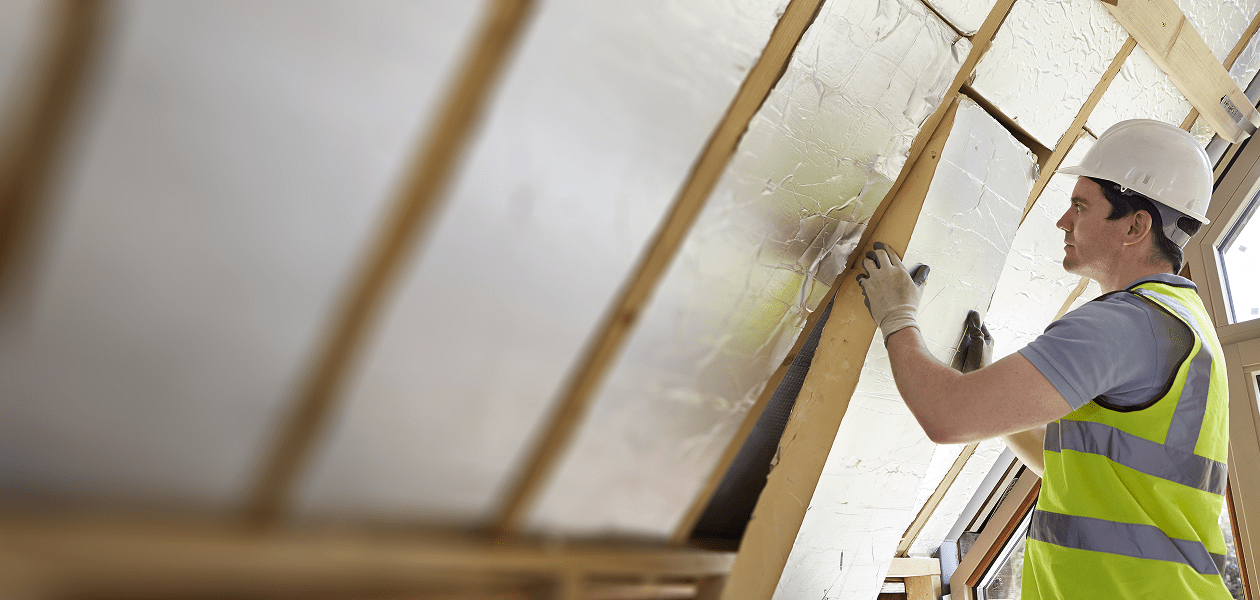Polyisocyanurate (PIR) and extruded polystyrene (XPS) are both lightweight, rigid foam boards used for thermal insulation in buildings.
Polyisocyanurate (PIR) and extruded polystyrene (XPS) are both lightweight, rigid foam boards used for thermal insulation in buildings.
This blog post will help you to understand some of the key qualities that distinguish XPS from PIR insulation. Armed with that understanding, you’ll be able to make informed decisions about when and why XPS might be your preferred insulation on a construction project.
What is the thermal performance of XPS compared to PIR insulation?
The primary reason for specifying thermal insulation materials in building projects is to reduce heat transmission, energy demand and carbon emissions. Insulation materials are therefore heavily promoted based on their thermal conductivity, where the lower the value, the lower the heat energy conducted by the material.
Most PIR insulation products offered for general applications such as ground floors and pitched roofs have a thermal conductivity of 0.022 W/mK. This performance is achieved in part by the foil facing on the insulation boards, which must remain intact to ensure the declared performance is delivered consistently. With a damaged foil facing, the thermal conductivity achieved can be more in the region of 0.026 to 0.028 W/mK.
XPS thermal conductivity
An XPS insulation product usually achieves a thermal conductivity of around 0.033 W/mK. This is higher than PIR, so a slightly thicker XPS product is required to deliver an equivalent thermal performance. When insulation products are so commonly marketed on the basis of offering the thinnest possible solution, this seemingly puts XPS at a disadvantage.
One thing to keep in mind, though, is that XPS products don’t depend on a foil facing to achieve their stated performance.
What are other performance characteristics of XPS insulation compared to PIR?
A misconception that we often encounter is the belief that PIR performs better than other materials across all categories, simply because it happens to offer a better thermal conductivity. For example, people can think that PIR must also offer a better load-bearing capacity.
PIR insulation compressive strength is typically 120 kPa, and can be as high as 150 kPa. The lowest grade of XPS typically offers 200 kPa, with the majority of product sold offering 300 kPa. Other grades of XPS are available, offering a compressive strength as high as 500 kPa.
For some applications, this distinction has little relevance. In a pitched roof, for example, compressive strength has no bearing on the suitability of the insulation. Solutions that can achieve the required U-value with minimum thickness are desirable to save space and maintain head heights, for which reason we don’t offer XPS products for pitched roofs.
In a ground floor construction, however, compressive strength is a much more important characteristic. Thickness is less of a concern, because a slight increase in insulation thickness can usually be accommodated with relative ease. XPS insulation comes into its own for ground floor build-ups, and it has other qualities that arguably make it a better choice than PIR.
How does XPS compare to PIR as a ground floor insulation solution?
Misunderstandings about how insulation performs often influence the way it is designed and installed as part of ground floor build-ups.
A PIR insulation board has to be positioned above the damp proof membrane (DPM), to protect it from ground moisture. It also has to be positioned below the air and vapour control layer (AVCL), both to limit any potential risk of condensation in the floor, and to protect the foil facing from reacting with alkalis in any screed installed over it.
Even when designers indicate insulation in the correct position within the floor build-up, it is not uncommon for PIR to be installed directly against the ground, with the DPM installed above.
Without correct installation, there is a risk that the performance of PIR insulation will be compromised due to moisture exposure, or damage to the foil facing. XPS insulation, meanwhile, has a lower moisture absorption and is manufactured without any facings. Its thermal performance therefore cannot be compromised due to incorrect installation relative to the membrane layers in the floor
Specifying XPS insulation for ground floor build-ups
XPS insulation can be specified for installation directly on the hardcore and sand blinding layers of a ground floor construction, with the confidence that it will maintain its performance in the event of limited exposure to ground moisture.
The DPM can be installed over the insulation and also act as the AVCL. This saving in time and cost compared to using two separate membrane layers might sound relatively modest for a single property or extension project, but across a development of multiple units it could add up.
You can still choose to design a floor with XPS between two membranes, for added reassurance. Crucially, if the installer then chooses to put the XPS in contact with the ground without your knowledge, you have the confidence that the product specified will still deliver the anticipated U-values over the life of the building – something that might not be the case for incorrectly installed PIR boards.





